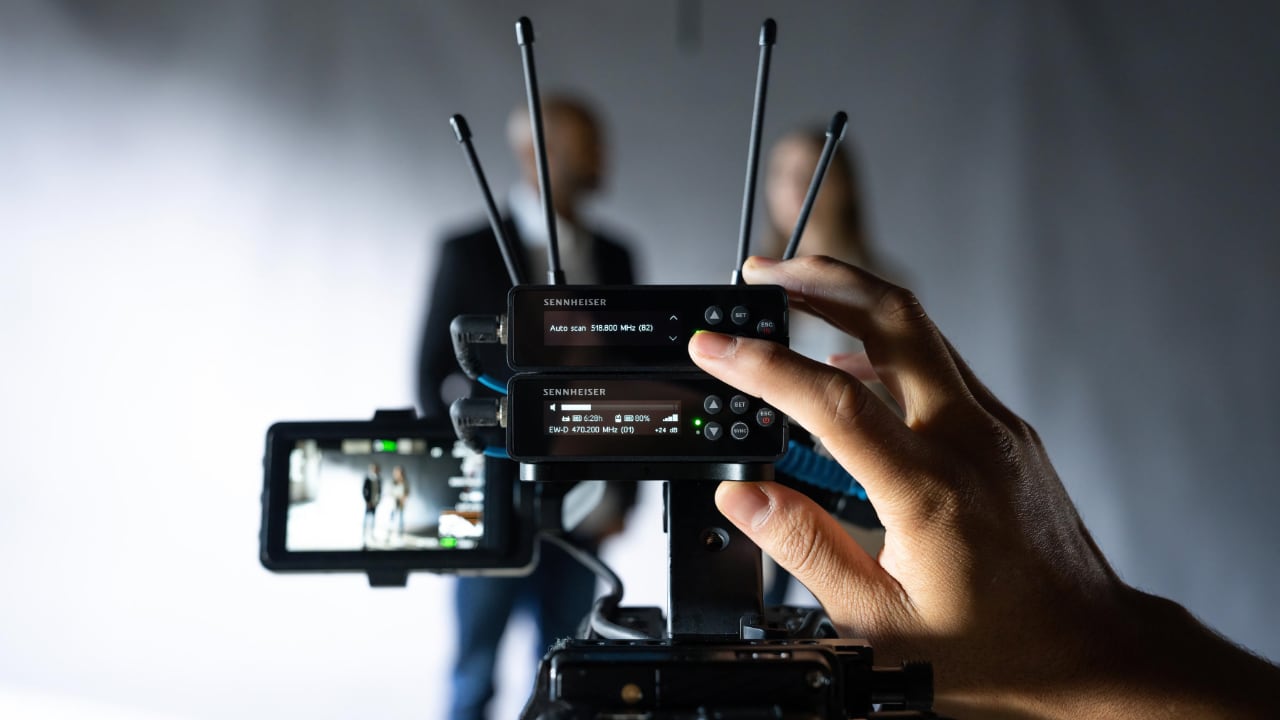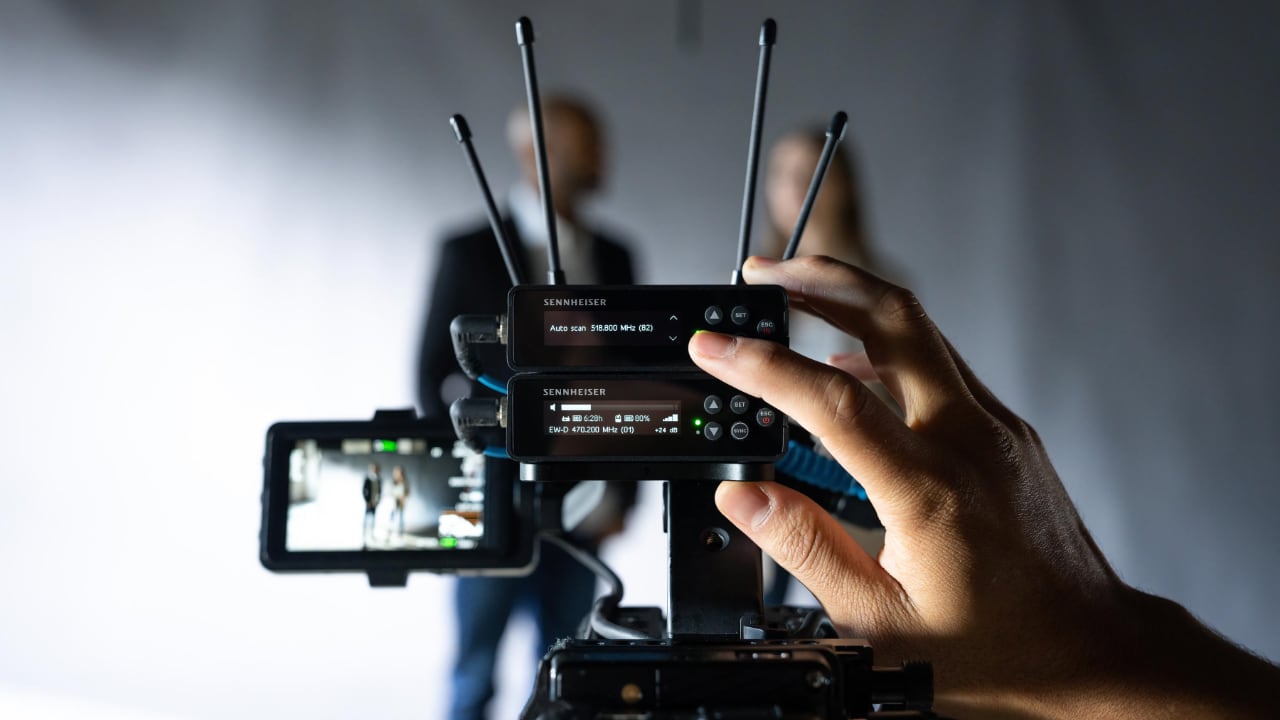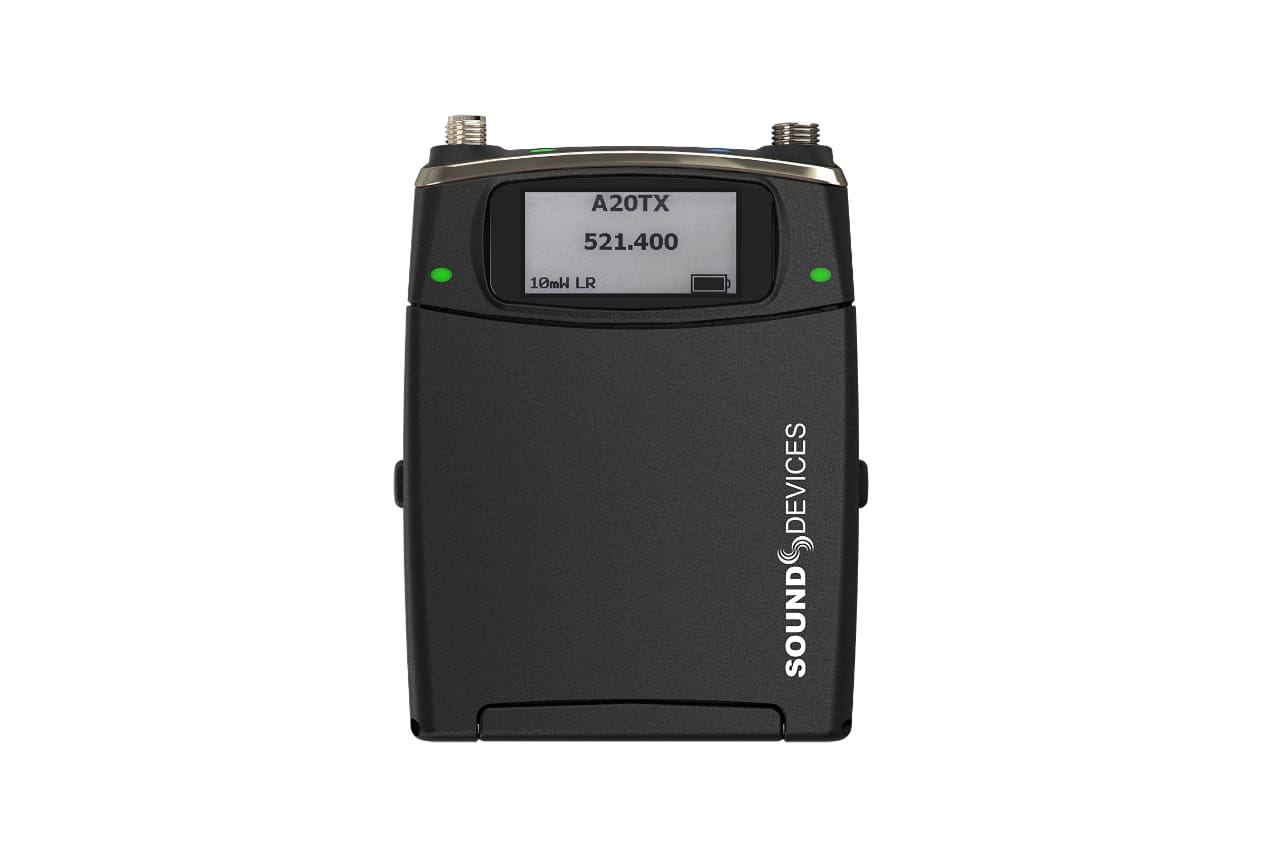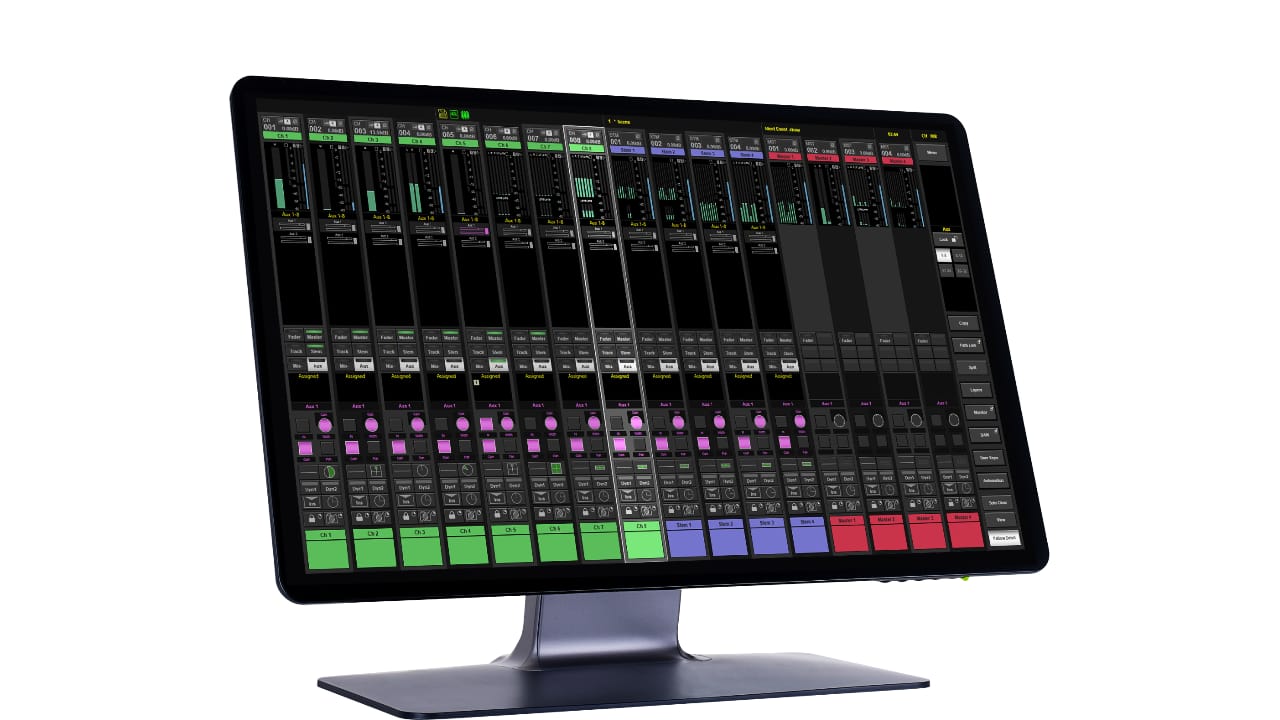
What is the current state-of-the-art when it comes to audio? Kevin Hilton took a deep dive into Hall 8 at IBC to find out.
Audio has always been a significant component of IBC, despite having a somewhat detached presence at the show. This is partly because many sound companies have chosen to be located in the (mostly) audio-focused Hall 8 at the RAI convention centre. It is also, though, in many respects down to sound development following its own path, despite the ultimate intention of the resultant technologies being married to the latest video products.
In this regard, while immersive surround sound can be regarded as the big audio development of recent years and 4K transmission and TV sets as its natural partner, few broadcast and streaming services - with the obvious exception of Netflix and Amazon Prime - are currently implementing it. But, as IBC2023 demonstrated, the various competing systems are there when people are ready.
Dolby Atmos remains the best-known and most widely adopted object-based audio (OBA) format, although the manufacturer did not have any new sound-oriented developments or products for this year. Atmos' main competitors in the OBA stakes, MPEG-H 3D Audio and DTS:X, were demonstrated on the Fraunhofer IIS stand and as part of Xperi's TiVO, Smart TV and Connected Car products exhibit, respectively. IMAX, also at IBC with its recently released 3.0 platform, is now targeting the home theatre market, with its Enhanced immersive audio system employing some elements of the DTS:X codec to recreate big screen IMAX Signature Sound, particularly the bass.

Going wireless with the Sennheiser EW-DP SKP
Sennheiser moved into immersive audio in recent years with the AMBEO product range,
based on Ambisonics. During IBC, the manufacturer announced that its AMBEO-2 two-
channel spatial audio renderer will be available as a plug-in for the Merging Technologies Anubis interface during the fourth quarter of this year. This is able to turn live immersive mixes into an 'enhanced' two-channel version, doing away with the need to create a separate stereo mix. New on Sennheiser's wireless microphone side was the EW-DP SKP plug-on transmitter, which is able to bring radio capability to any cabled XLR mic. Also on show was the fifth generation of the Evolution digital system, including the EW-DP digital UHF mic.
Spectrum is green
The reallocation of spectrum over the last 15 years has reduced frequency availability for wireless microphone use in both broadcasting and the live events sector. Digital systems have gone some way in mitigating the situation, and manufacturers continue to develop new systems to make the most of what frequencies are available.
Shure showed several products designed to provide efficient frequency handling, including the Axient Digital AD600 spectrum manager, which has frequency planning, management and coordination capabilities. Shure recently bought audio software developer Ab Wavemark Oy and showcased its new acquisition's product range during IBC. This included listening and monitoring app WAVETOOL, which is offered alongside Shure's Wireless Workbench 7 package as a full RF/audio set-up system.
Sound Devices' solution for spectrum management is its proprietary SpectraBand
technology, which provides a global tuning range of 169-1525 MHz. During IBC, it showed new members of its Astral range of wireless products, including the A20-TX digital wireless body pack transmitter and A20-Nexus and A20-Nexus Go multichannel true diversity wireless receivers.

Sound Devices' new A20-TX digital wireless body pack transmitter
A new full-duplex mobile transceiver was introduced by Wisycom in the form of the RPU500-F. Featuring a 1W multi-band transmitter - where this is applicable - and a new integrated intercom/interruptible foldback (IFB) receiver, it is intended to work with Wisycom's Symphony Series receivers and MTK Series transmitters. The RPU500-F transmitter operates in the 174-960MHz spectrum, while its receiver runs in the 700MHz band.
Audio at scale
Audio monitoring and processing on a wider scale produced something of a mini-trend
throughout this year's IBC. Several companies - both those known for this kind of
technology and others not as recognised for it - introduced new systems and devices for checking audio signals passing through a production chain, as well as improving the
quality of sound overall. Console and audio over IP (AoIP) developer Wheatstone added to its existing range of audio and microphone processors with the Audioarts Voice1. It offers asymmetrical voice correction, optimised high-frequency equalisation, targeted filtering and a psychoacoustic algorithm that processes only what needs to be processed.
IP audio is now a priority when it comes to monitoring, and TSL's most recent product in
this area is the MPA1-MIX-NET-V-R. This is an audio confidence monitor and mixer
featuring 16 independent mixes that can be quickly recalled. The manufacturer sees it as aiding the move to IP, particularly as it conforms to the SMPTE ST 2022-7 standard.

The TSL MPA1-MIX-NET-V-R - helping the transition to IP
Mixing consoles have always included audio processing capabilities, but these were mainly for the incoming feeds from the studio or location microphones. Today, the console is at the beginning of a large IP network, which demands more powerful processors. To this end, Lawo unveiled version 10.8 software for its A__UHD DSP (digital signal processing) audio engine, which works in conjunction with mc² series mixers to create the Power Core platform. New features include flexible bus routing, more auxiliary busses (up to 256) and integration with Lawo's HOME family of video processing apps through the QSC Q-Sys control system proxy.
Calrec launched a new product for this area in the shape of the ImPulse1 IP audio
processing and routing engine. Targeting the more cost-effective end of the ST 2110
market, the ImPulse1 is designed to work in single console installations and offers 128-
input channel DSP. It is able to work with Argo Q and S controllers, which debuted at IBC
last year, as well as the Calrec Assist browser-based user interface.
The option of a standalone or networked processing approach was offered by Jünger
Audio with the AIXpressor. This uses the basis of the new flexAI platform and natively
supports analogue, AES3 and MADI, as well as Jünger's low-latency 1024-channel
tieLight interfacing and audio over IP (AoIP) in the form of Telos Alliance Livewire+ and the AES67 interoperability standard as part of SMPTE ST2110-30.
Jünger is a partner of the Telos Alliance, which was showing audio processors from its
own range and those of its subsidiaries. These included the Omnia Forza, which is
promoted as a new take on the traditional five-band processor and features new automatic gain control and multiband limiters, and Minnetonka's AudioTools Server, designed to automate a range of audio jobs, including loudness control. It is aimed at cable, satellite, OTT, terrestrial and IP TV, radio and post-production work, with the option of being operated on hardware or in the cloud.
Genelec is best known for its mixing room monitor loudspeakers but used this IBC to
concentrate on control, processing and monitoring systems. Central to this is the new
UNIO Audio Monitoring Service Platform, which combines Genelec's Smart Active Monitors, GLM 5.0 calibration software and Aural ID 2.0 technology to produce an overall reference system for in-room loudspeaker and headphone set-ups. Also on show was the 9320A Reference Controller, which is able to run up to three separate monitoring systems plus headphones and conforms to the EBU R128 and ATSC A/85 loudness standards and the SMPTE RP200 standard for relative and absolute sound pressure levels.
AoIP now ubiquitous
Because it is now so widely adopted in broadcasting, AoIP can no longer be seen as a
trend. This was underlined by both RAVENNA and AES67 celebrating anniversaries at IBC2023, 13 and ten respectively. For the record, Dante is now 17 years old and during the show Audinate demonstrated the Connect suite of software apps for broadcast production in the cloud.
AoIP can be found in a wide variety of technologies and systems today. These range from specialist units such as Glensound's new Charles Interpreter box, offering primary and secondary Dante connections plus dual PoE connectors, to more general applications like intercom and sound mixing. The uptake of AoIP for communications has been rapid in the last few years and IBC saw more additions of the technology to the ranges of the leading companies. Clear-Com added Dynam-EC real-time production software and the 2X10 Touch desktop panel to the Eclipse HX Digital Matrix system, RTS introduced the DSPK-4 digital speaker station, a new member of the Digital Partyline range, and AEQ showed both the 9000 Series and global XSPEAK intercoms.

SSL's Tempest Control App
AEQ also had its ATRIUM digital audio mixer, which is able to cope with up to 1000
channels of local or IP audio, while Solid State Logic brought a new dimension to its IP-
based mixing platform, the System T, with the Tempest Control App (TCA). This is able to control all mixing, routing, monitoring, set-up and automation on desks and can also
integrate with newsroom production systems.
A sound issue that has been a point of contention over the last ten or so years has been
audibility. While this has recently manifested itself less in the form of complaints about
mumbling actors and dialogue buried amid music and effects, the situation does seem to have taken a new turn, with research showing that more viewers - of all ages and levels of hearing - are using closed captions. Among IBC's exhibitors this year was a company offering technology to enable people to listen clearly on any device. AUDUS Technologies was founded by an ex-ear, nose and throat doctor, Marciano Ferrier, and produces the knisper range of assistive listening devices, The broadcast-specific unit is aimed at TV, streaming, radio and podcasts.
This goes to emphasise both the ongoing diversification in audio development and its overall importance to broadcast technology.
Tags: Audio

Comments